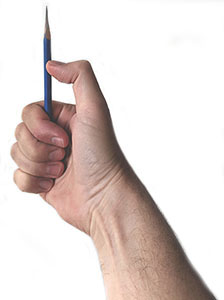

Have you ever been in a life drawing class, or in front of something you want to draw, but with a limited amount of time to draw? Have you started your drawing only to get halfway through and realize that all parts of it are out of whack? Have you ever jumped right into a drawing, and gotten something down, felt good, felt like you had something good going, only to realize that what you've drawn is too big, too small, or does not fit together with the rest of the drawing?
In my other tutorials, I describe the sight-size method and doing master copies. Both are modes of drawing and drawing practice that allow you to take your time. Those modes of drawing actually benefit from you taking your time. But what about situations where you don't have time? How do you keep your drawing together? With time pressure, how do you keep your proportions in check and all the parts fitting together? Fundamentally, how do you stay in command of your drawing?
When I was learning to draw, and working on improving my drawing, I bumped into this problem a lot. It affected me and affects many, if not all beginner artists. When faced with time pressure, you can become your own worst enemy. In a life drawing class, drawing the human figure is one of the hardest tasks in art. This is because there is so much information to capture from the figure. There are the basic shapes, the basic form, the arms, legs, head, likeness, anatomy, color, individuality, character, etc.
All of this information can be completely overwhelming. A typical beginner dives in and immediately begins to focus on one area, zooms in and tries to lay down detail and definition in one particular area. Soon, the beginner will realize that time is limited and will jump to another area, focus on it, and lay down more detail. The beginner will very likely not make sure these two areas are correct proportionally in relation to one another. If and when they do, it can be very frustrating to have to erase and re-work a section. Time is wasted, the drawing is now messy.
The answer is to have a solid procedure and mental framework for going about doing your drawing. The difference between a beginner and a well-trained artist is very much determined by the method each goes through when executing a drawing. A well-trained artist has learned and internalized an effective method for going through the process of drawing.
This is where the comparative method of drawing or just comparative measurement comes in. In its simplest form, the comparative method is just using some means (usually your thumb and pencil) to denote an amount of visual length that corresponds to a visual distance on the subject. Then, moving your outstretched arm, with your thumb in place, to use that unit of visual distance to measure additional units of distance on the subject. The comparative part is finding and using a unit of visual length in your drawing, and using the number of units you measured in your subject to find the relative visual distances in your drawing.